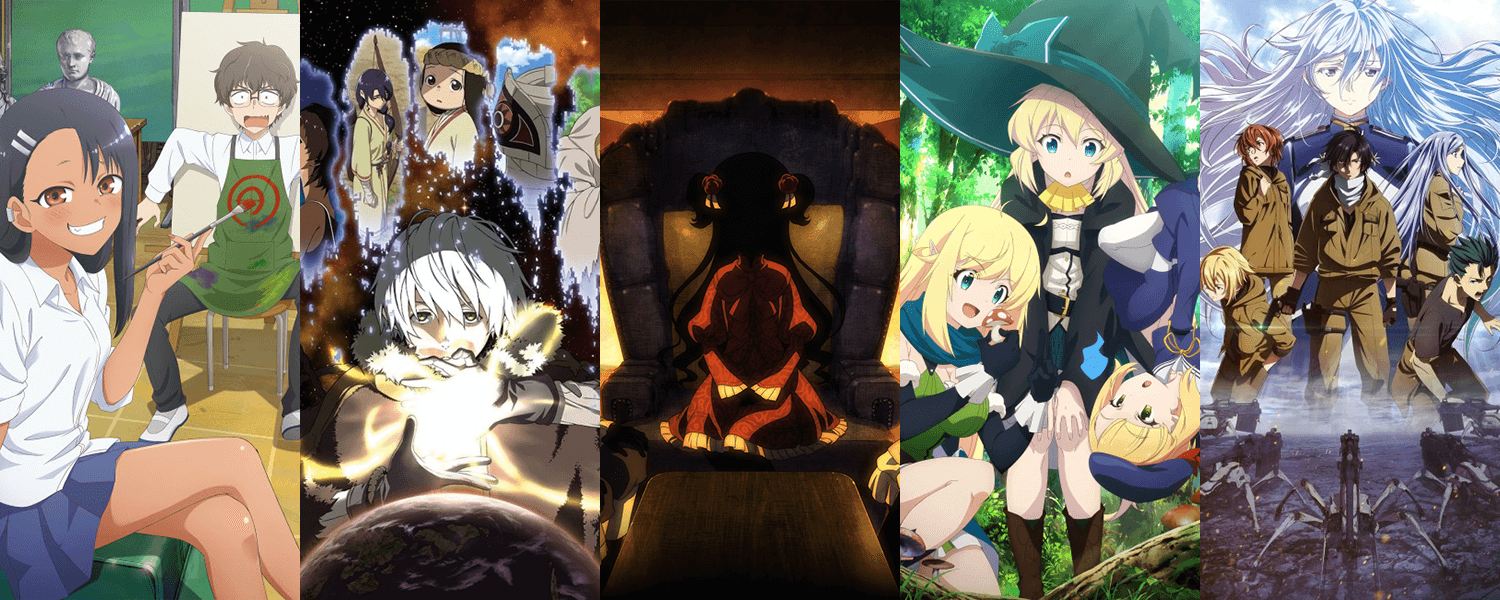I was never intending to write first impressions posts for every anime airing. I don’t have that kind of time or motivation, nor do I care enough about some of them to write any amount of text that would justify an entire post. Yet still, I would like to have said something about them—there are even those on this list that rank amongst my favourites of the season thus far.
So here we are.
I’ve already written longer posts about a few series I’m currently watching, specifically: Mars Red, Vivy: Fluorite Eye’s Song, and Super Cub.
The following list is in no particular order, though I will highlight whether or not I’ve decided to continue with them1. It’s important to understand that in the end, these are only my personal opinions, even if those opinions are great.
Odd Taxi
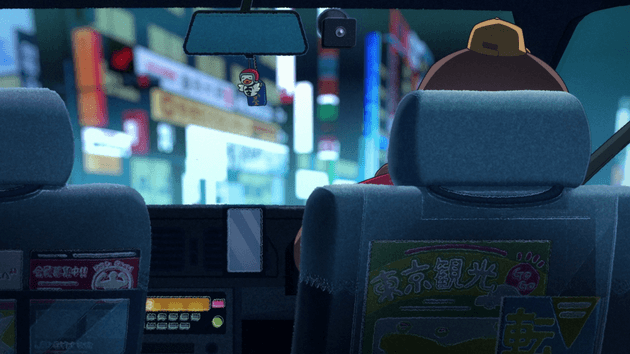
When I first read about Odd Taxi I was put off by the animals but intrigued by the concept. As it turns out, choosing to give it a shot was absolutely the right choice. The animal characters and visual style ended up playing into the first2 episode’s air of oddity along with the slightly sinister vibe lurking just beneath the surface. It feels as if there’s something a little bit crooked about each and every one of the characters, some of those being directly shown while others are merely implied.
I can relate to Odokawa (Hanae Natsuki) and his dry wit. I also struggle to say Bruce Springsteen multiple times in quick succession3. For an anime where so much of it is spent just listening to people talking, and often about nonsense, the dialogue and its delivery feels so natural that it’s somehow riveting just to follow the exchanges.
Underpinning it all is the ongoing mystery of the vanished girl—is she really in Odokawa’s closet, or are we being led on with a red herring? I find myself eagerly waiting to find out more of what’s going on in the lives of this distinctly Odd bunch.
Incidentally, the tweet from the first episode actually exists.
待ってwwwタクシー運転手に就活うまく行かないってこと相談したらスマホ奪われてコレ見て元気出せよってツーショット撮らされたんだけどwwwww pic.twitter.com/vD514ruACM
— 樺沢太一 (@kbsw_t) October 10, 2020
Verdict: Definitely listening watching!
Shadows House
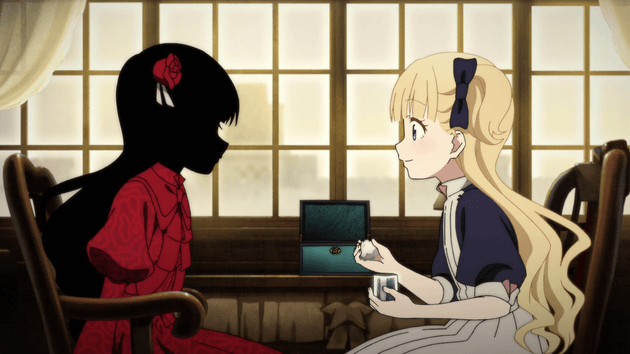
I would actually have liked to dedicate a full post to Shadows House, but there wasn’t really all that much I felt the need to say about it in the end. Despite knowing little about it beforehand, it has ended up amongst the group I consider to be the strongest contenders for the season. The juxtaposition between the slightly creepy gothic mystery vibe and our cute and clumsy living doll protagonist, Emilico (Sasahara Yuu), lend the series a charm I quite enjoy.
The concept itself is fascinating—they’re called shadows, but are they actually made of soot, given that they spread it everywhere depending on their emotions? There’s a nice dichotomy between the shadow masters and their living doll servants, particularly in Emilico and Kate’s (Kitou Akari) case, with one being shrouded and expressionless while the other is brightly coloured and full of emotion. I would not be at all surprised to see similar contrasts in the other pairs, and very much look forward to meeting them as the series progresses.
I have plenty of thoughts on where the series is headed and what the various instances of symbolism present throughout the OP and ED4 are meant to mean, but I don’t like to speculate about series that aren’t originals because it’s ultimately a meaningless exercise when all the source readers know full well what’s to come and are often eager to point out when conjecture is incorrect.
What I will say is that it’s obvious that the similarities in the silhouettes of the shadows and their living dolls holds meaning. It also says way too much that aside from Emilico and Kate, all the other shadows share the same seiyuu as their living doll counterparts. They’re mostly pretty big names too.
On the studio side, CloverWorks seems to be gaining some notoriety amongst English-speaking fans for rushed adaptations and poor working practices, so this could be a chance to redeem themselves. Or a chance to make things worse. I’m hoping for the former, but will brace for the latter. At the very least, I’ll be picking the manga up!
Verdict: Watching (without a shadow of doubt).
Ijiranaide, Nagatoro-san
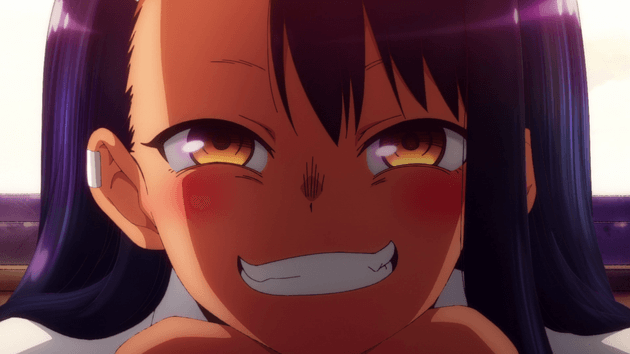
I’ve been following the Nagatoro manga since it first started serialisation so I pretty much knew exactly what to expect. Like many, I was first introduced to Nagatoro (Uesaka Sumire) through 774’s Pixiv panels almost a decade ago and was surprised when her series was first announced for serialisation. Of course, the manga ended up being significantly toned down from the original, but as a result, I think it ended up working out better.
Comparisons will inevitably be drawn with Karakai Jouzu no Takagi-san and Uzaki-chan wa Asobitai!, both of which are part of this current wave of anime adaptations focused on dealing with a very specific type of relationship dynamic. Nagatoro is a little bit more malicious than the other two—her early interactions with Senpai (Yamashita Daiki) are more in the vein of traditional bullying. She pushes too hard and too far; he ends up crying a lot. But it’s the gradual development of the relationship between them that results in the manga being quite sweet.
This first episode checked all the boxes I’d hoped it would. Uesaka Sumire nailed Nagatoro’s personality, putting the perfect voice to her characteristic facial expressions and matching the frequent changes in tone. The animation wasn’t really anything special, but they still managed to make Nagatoro’s martial arts shine.
I hope this adaptation covers enough material to reach the parts of the manga where their relationship starts to further develop. It will also be interesting to see how many of her random outfits and facial expressions end up making it into the anime. Otherwise, I’m very much looking forward to the return of Nagatoro’s group of friends—her conduct around them and their interactions with Senpai are part of what makes the manga such a good read.
Verdict: Have to watch.
86
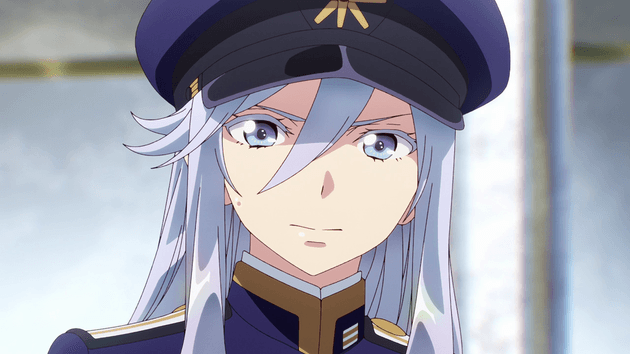
I won’t lie—I thought I would like this more than I did. That’s not to say it was bad or anything, only that the first episode didn’t quite resonate with me, and certainly didn’t live up to the sheer amount of hype it’s been getting from English-speaking light novel readers.
The premise itself is nothing new. There’s a bunch of people who are being arbitrarily discriminated against5 and since they’re not considered human, they’re used to pilot ‘unmanned’ drones to fight on the front lines of a brutal war. The populace doesn’t know they exist and no one in the military cares, save for this one hyper-talented young woman (Hasegawa Ikumi) who is also the youngest ever to rise to the rank of major, comes from a distinguished family with an uncle who happens to be a high-ranking military officer, and is angry on their behalf and undoubtedly planning to try and save them.
That character description contains so many clichés and this is probably what most people mean when they say a story lacks subtlety, but I suppose that’s what you get when adapting the first volume of a light novel that was ostensibly written to stand by itself before being expanded into a series. On the plus side, they didn’t open with a verbal exposition meant to drive the situation home even further like many English-speaking fans seemed to have been hoping for, so it at least seems the anime is trying to be a bit more subtle about it.
I don’t intend to be wholly negative here—there were things I liked about 86 too. The cuts from carefree moments to bloody battle were jarring—but in an intentional manner. I also liked the contrast between the two camps we follow—Lena, lonely but wealthy and to whom natural produce is a luxury, and the Spearhead squad, a close-knit group of human slaves who show obvious camaraderie and apparently have real chickens. Both are subject to their own cages and freedoms—though they take very different shapes in each case.
There’s promise here, but it wasn’t the strongest first episode in my book. Garter belts might be nice, but they won’t sell a whole series6. I’m pinning most of my hopes on the execution going forwards.
Verdict: Watching for now.
Slime Taoshite 300-nen, Shiranai Uchi ni Level MAX ni Nattemashita
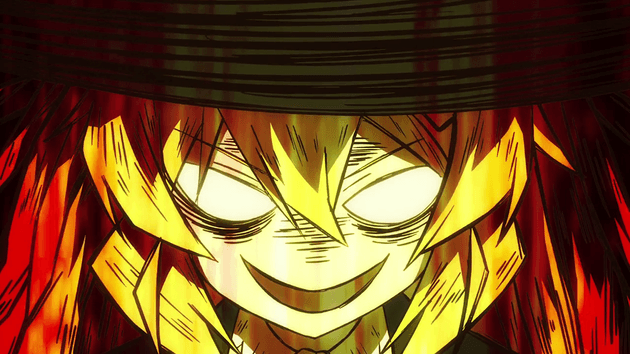
I don’t have a lot to say about Slime Taoshite 300-nen, Shiranai Uchi ni Level MAX ni Nattemashita. It was cute. The characters were all cute. The future characters appear to be pretty cute too. It has an immortal witch voiced by Yuuki Aoi7, a 300-year-old dragon girl, and apparently a bunch of other monster girls who all look pretty human and are all very old despite their appearances.
It’s billed as a fantasy slice of life comedy, two of those being genres pretty close to my heart8, and is another series with an overpowered protagonist used in a comic fashion. I personally prefer series with female leads, so it’s scoring another point there. The studio behind it (Revoroot) is new enough that I haven’t really seen either of their previous series, so it’s hard for me to judge what to expect on that front.
Seems like it’s going to be a relaxing one—perhaps much needed when compared with the other light novel adaptations this season.
Verdict: Watching.
Yakunara Mug Cup mo
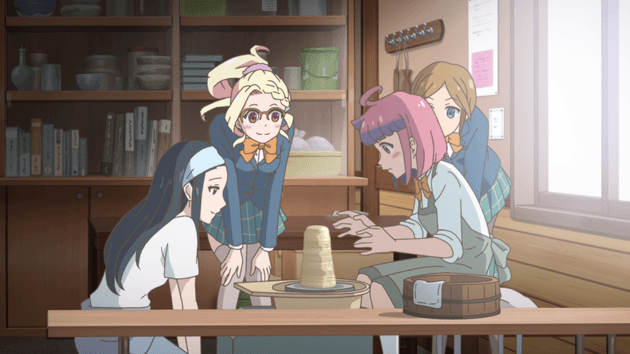
I do not care about pottery in the slightest, and that’s usually what makes anime like these great; I don’t care about camping either but I still adore Yuru Camp. It really says a lot when an anime can get you hyped about something you have zero interest in.
Yakunara Mug Cup mo was more melancholic than I expected and fell short of getting me truly invested in the pottery aspect. The issue comes down to the fact that it seems to prefer throwing long strings of facts at the viewer rather than trying to immerse them in the hobby the way a series like Yuru Camp does. It also relates to the lack of characters that really piqued my interest; none of them quite managed to pull me in.
The melancholy could be nice and might steer the series towards a heart-warming climax—Himeno (Tanaka Minami) is essentially following in the footsteps of her deceased mother and will likely find herself growing closer to her in the process. I usually enjoy series that involve a character finding joy in a new hobby, but this one just doesn’t click with me.
Verdict: Probably dropped.
Sentouin, Hakenshimasu!
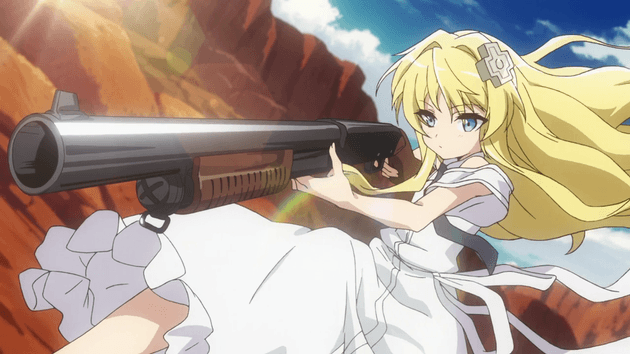
I liked KonoSuba quite a bit, but it was the kind of anime that would sometimes set up a joke only for it to fall flat on its face. It was forgiveable though, since it made up for it with moments that were pretty damn funny and did a good job of parodying so many overused isekai tropes.
Sentouin, Hakenshimasu!, on the other hand, seems to have been brought into the world face-down and has yet to figure out how to stand up.
This first episode wasn’t a complete failure at what it set out to do—I consider a comedy to have failed on a fundamental level only if it doesn’t manage to elicit so much as a chuckle. Sentouin, Hakenshimasu! did get me to chuckle once. Actually twice. The first was upon hearing the Mac boot-up chime, and the second when Agent 6 (Shirai Yuusuke) chose to change the password on a country’s legendary relic. The latter is actually pretty funny.
It’s incredibly easy to see that both were written by the same author (Akatsuki Natsume). Too many of the characters seem to be prototypes of those appearing in KonoSuba9 but don’t exude nearly the same degree of charm. Aqua was funny because despite being a literal god, she was incessantly rude and the most useless of any of them. Snow (Kikuchi Sayaka) seems to have been intended to fulfil a similar role but doesn’t fall nearly as far or have the same inattentive demeanour. There are several characters who were clearly later distilled into Megumin, but none of them have the same rapport with Agent 6 as she did with Kazuma.
Perhaps therein lies a large part of why this anime doesn’t work for me—Agent 6 doesn’t draw these characters together nearly as well as Kazuma did. He’s perhaps just as dumb and just as perverted, but he lacks the bumbling naivety that made Kazuma’s interactions with the others entertaining to watch.
Alice (Tomita Miyu) is probably the only character I actually liked, largely owing to her stoic and unconcerned manner. She’s a good foil to Agent 6 and their dynamic is closer to those that made KonoSuba great. Sadly, she alone isn’t enough to get me to keep watching.
Verdict: Dropped.
Seijo no Maryoku wa Bannou Desu
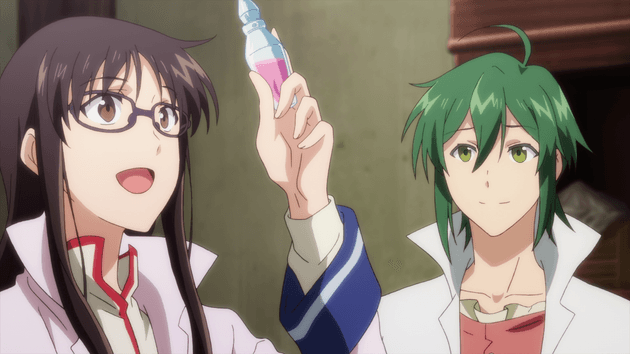
It’s always nice to see an isekai feature a female protagonist10; this season we have three running concurrently! Seijo no Maryoku wa Bannou Desu is particularly interesting in that it’s more oriented towards the shoujo demographic and seems implied to be a series in which the romance will be quite focal.
While it certainly has shoujo elements, it’s not quite typical in that regard11. Sei (Ishikawa Yui) is a headstrong OL who seems to know what she wants. She’s smart and focused, and quickly comes to terms with her situation to the degree that she finds herself taking on work soon after her summoning.
As I often do with this kind of plot thread, I have to wonder if the author behind this (Tachibana Yuka) might have drawn parallels with something they experienced themselves. Being passed over for a much-deserved promotion in favour of someone lacking the necessary skills, perhaps? It’s such an obvious interpretation of what happens to Sei—summoned to another world only to be told she’s not the one they’re seeking, yet secretly harbouring the power the ‘chosen one’ lacks.
This is far from the first time an isekai has opened with such a dismissal. To jump immediately to a popular title, one might compare some aspects to Tate no Yuusha no Nariagari, wherein the rivals are lauded but prove to be useless while the protagonist is the one who actually goes around doing the work. Sei may not be shunned or disdained in the same manner as Naofumi, but she’s still rather neglected by the people who ripped her from her former life.
So far the first episode didn’t do much to capture my interest but neither did it do anything to put me off giving it a fair chance to pick up as the plot moves onwards.
Verdict: Watching for now.
Subarashiki Kono Sekai The Animation
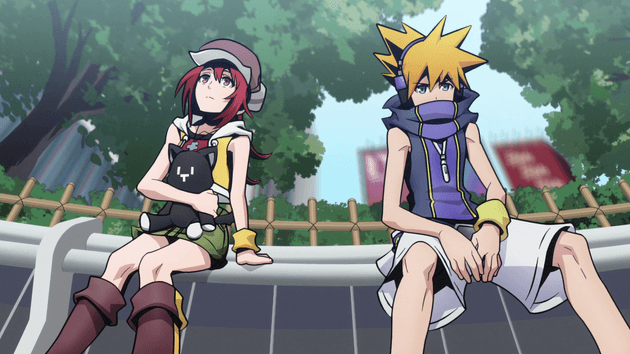
TWEWY12 was never a game I expected to see get an anime adaptation. It’s not even really a game for which I think an anime adaptation would work, and the pacing of the first episode was more than poor enough to justify my concerns. For the most part, it felt a bit all over the place, bouncing between developments and spacing them out only through the use of a series of jarring CG battles.
I like the general style—it’s very faithful to Nomura’s original art for the game and it’s actually quite nice to see characters like Neku (Uchiyama Koukikouki), Shiki (Hachimine Anna), and Rhyme (Taketatsu Ayana) come alive in higher definition. The CG background characters and battles, on the other hand, are pretty incongruous and strip away quite a bit of the style’s charm.
TWEWY The Animation has also reminded me just how hit and miss its original soundtrack could be, with some good tracks mixed in amidst songs that even now I remember prompted me turn down the volume on my DS. It’s also already had to swap out the planned opening theme after the scandal and arrest involving ALI’s drummer.
I’m sticking with it for now, but with so many other good picks this season, this will probably be amongst the first to go if I find myself short on time.
Verdict: Watching for now.
Blue Reflection Ray
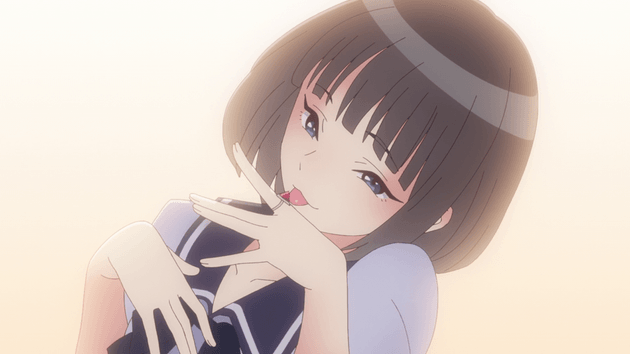
Blue Reflection Ray isn’t a strait adaptation of the original game. In fact, other than its concept and the presence of two particular characters who have yet to appear in the anime itself, there’s really little to tie it to the original work.
I’m a big fan of magical girl series and have always particularly loved Kishida Mel’s distinctive art style. I’m not sure what J.C.Staff was thinking in their attempts at realising it though, especially when they were in charge of Kami-sama no Memo-chou almost ten years ago and did a fair job of it back then. This interpretation looks almost amateurish at best—like the art student who has discovered airbrushing for the first time—resulting in the appearance that everyone on screen has some sort of rash.
Otherwise, the first episode had a bit of a slow start but escalated quickly when it finally kicked into gear. As a result, the last few minutes were actually quite enjoyable to watch. There’s a lot of overt yuri symbolism scattered throughout, but that shouldn’t really come as a surprise given that it featured prominently in the original game. I quite like the fact that there are opposing reflectors and that for now it boils down to a battle between two groups of magical girls. I’m quite interested in seeing where they’re planning to take that!
Verdict: Watching.
Bishounen Tanteidan
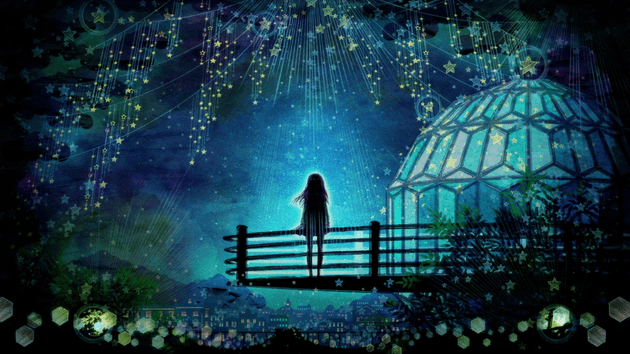
Well this was definitely the full SHAFT/Shinbo/NISIOISIN combo.
The writing style was palpable from the very first lines spoken and continued through the winding streams of words that sat firmly on the border between sense and nonsense. NISIOISIN is one of those rare writers who can write pages upon pages of nonsense but still make them readable13. In this case, much of it was nonsense. The three rules of the club for instance are too clearly redundant, but it’s their presentation that still results in their delivery being entertaining.
I’ve always felt that this combination was what made Monogatari so good, but it remains to be seen whether they can repeat the same success with Bishounen Tanteidan. Shinbo’s directing was as chaotic as ever and at times the art was captivating—enough that I could almost believe SHAFT was back in its prime.
To be honest though, other than Mayumi (Sakamoto Maaya), I don’t care much for the other characters and as a result it wasn’t as entertaining as I would have liked. It saved itself a bit by focusing so much on the stars—I myself am fascinated by astrophotography, to the point where I was happy to see them using a proper equatorial mount, even if Manabu (Murase Ayumu) was dumb enough to look through the wrong end of the telescope itself.
It’s hard to say at this point whether this series is for me. I’d like to keep watching just to see what appears to be SHAFT back in top form, but I can’t say for sure how long that will hold out.
Verdict: Watching for now.
Dragon, Ie wo Kau
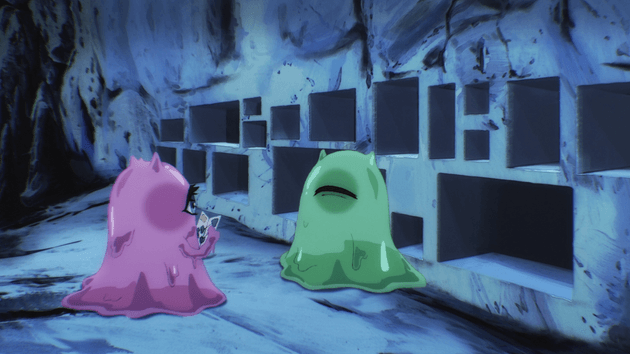
So monster real estate is actually quite a fascinating concept. I also always appreciate stories told from the perspective of monsters and demonic races in fantasy worlds, and not just when it applies to conflict. In those regards I was looking forward to seeing how Dragon, Ie wo Kau would run with it, especially since the manga runs alongside Mahou Tsukai no Yome and Totsukuni no Shoujo, both quite respectable fantasy manga.
Unfortunately, the only part of this first episode that actually dealt with real estate in the way I thought it would was the first few minutes with the house-hunting slimes. It wasn’t long after we switched to the dragon that my interest began to wane, and when the first status screen popped up, it plummeted to rock bottom. I’m not generally adverse to seeing status screens and levels in anime, but only where it makes sense. In this case it just felt so completely unnecessary—so lazy in its blatant quantification of Letty’s (Horie Shun) relative power level—that it stripped away most of my motivation to continue.
That could have been recoverable, but there wasn’t really anything in there to offset it. The animation was bland and the voice acting wasn’t great. The narration sounded like something straight out of a kiddie show and most of the comedy just wasn’t that funny.
Perhaps if it wasn’t for that initial bump in the road, I’d have given this a bit more of a chance. But at this point, we’ll never know.
Verdict: Dropped.
Fumetsu no Anata e
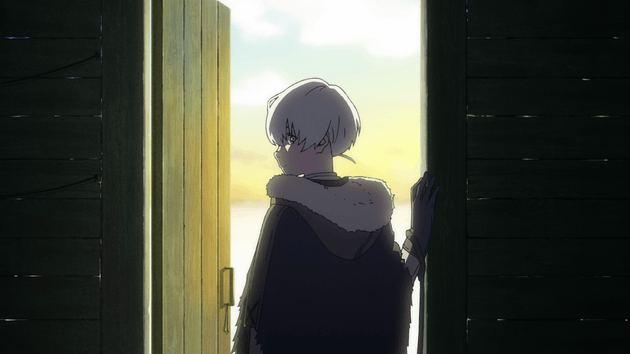
Fumetsu no Anata e is another of those manga everyone talks about and showers with praise. I don’t doubt that part of that stems from the fact it was written by Ooima Yoshitoki, whose critically acclaimed Koe no Katachi is treated in much the same way.
This first episode was a bit too predictable for me. Its entire plot was obvious from the boy’s (Kawashima Reiji) introduction and only became more painfully apparent as it moved through each beat of a story told in exactly the same way so many times before. The execution itself wasn’t bad at all—it was pretty solid in fact. Had I not been weary of seeing this same tragic story replayed so many times, I might have enjoyed it a lot more than I did.
I’ve heard this only adapted the first of ~135 chapters14 which might explain why the story was so self-contained, but the second episode preview doesn’t give me all that much hope either; the young female sacrifice is another of those overused tropes that always seems to play out exactly the same way when used in a tragedy.
I hope it will prove me wrong and subvert my expectations. The concept itself, centred around Fushi as an immortal being, has the potential to be a very interesting one. I just hope it doesn’t turn out to be a series of episodic tragedies like this one—nothing more than the same recycled clichés.
Verdict: Watching for now.
Jouran: The Princess of Snow and Blood
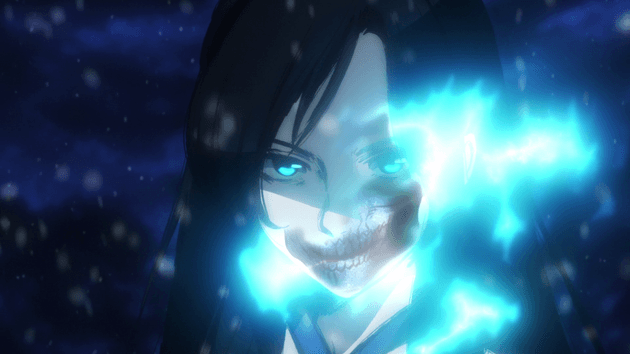
It’s quite fascinating to note the parallels between Jouran and Mars Red. Both share a similarly unusual directorial flair; both are set in relatively similar time periods15; both cover similar concepts, with Mars Red featuring vampires, while Jouran has their changelings; and of course, both end with the exact same predictable twist.
So then why does Jouran fall flat in comparison?
Maybe it’s just that I didn’t feel any connection to the characters or anything original from the story. Perhaps it’s that the random sci-fi elements feel jarring thus far. Or perhaps it’s the fact that it tries from the get-go to set itself up as mature and edgy but its attempts at both feel shallow at best.
I’m always a bit leery of series that try to set themselves up as mature by including sex, but at the same time go very far out of their way to ensure that even in scenes where people are fully exposed, they’re lazily-censored Barbie dolls. It’s a bit of a contradiction; they want the edginess of including the act itself, but don’t want the baggage that comes with along with it.
The animation was nice and the concept was semi-interesting, but overall, I’m just not feeling anything from it.
Verdict: Dropped.
Shaman King
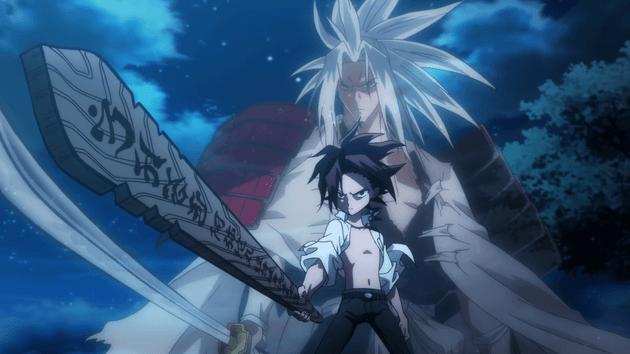
I’ve never actually watched or read Shaman King. Never looked into it much either, despite its apparent popularity. I think I might have caught part of a dubbed episode on TV in my early teens and been so scarred by the atrocious voice acting that I decided the whole thing was probably bad and I should never look at it again.
Thus far, there’s not much to say about the reboot. It’s a very typical old-school shounen premiere, from the protagonist destined to save the world and his annoying sidekick, to the way it goes to great pains to explain things that are quite visibly obvious to the viewer.
I’m not a fan of the character designs16, but I can live with them if everything else proves to be good. The concept’s not bad and the animation isn’t awful. I’m also fond of some of the cast members17, most notably Hayashibara Megumi and Horie Yui, so I guess I’ll give it some time to warm up.
Verdict: It appears I’m still watching.
-
It’s still funny to think that because of this role he ends up voicing three distinct emo characters in Kingdom Hearts 3D.
↩ -
Or how likely I am to continue with them.
↩ -
And second!
↩ -
I hope that’s not just me.
↩ -
As well as the episode itself.
↩ -
I really hope this racism allegory doesn’t just stop at hair colour because…hair dye?
↩ -
Actually, they definitely would.
↩ -
Three more distinct points in its favour from me!
↩ -
Although did it really need the isekai part?
↩ -
Despite being published later, Sentouin, Hakenshimasu! is apparently an earlier work.
↩ -
At least when it’s nice to see an isekai at all.
↩ -
There seems to be some debate as to the demographic of the original light novel, but the manga adaptation is shoujo at least.
↩ -
Playing the game more than a decade ago has burnt this acronym into my mind.
↩ -
Note: This applies to the original Japanese language versions only.
↩ -
As of date of publication.
↩ -
Only eight years apart, though Jouran’s setting adds sci-fi elements.
↩ -
Or at least not the male ones, anyway.
↩ -
Who I hear carry over from the original.
↩
